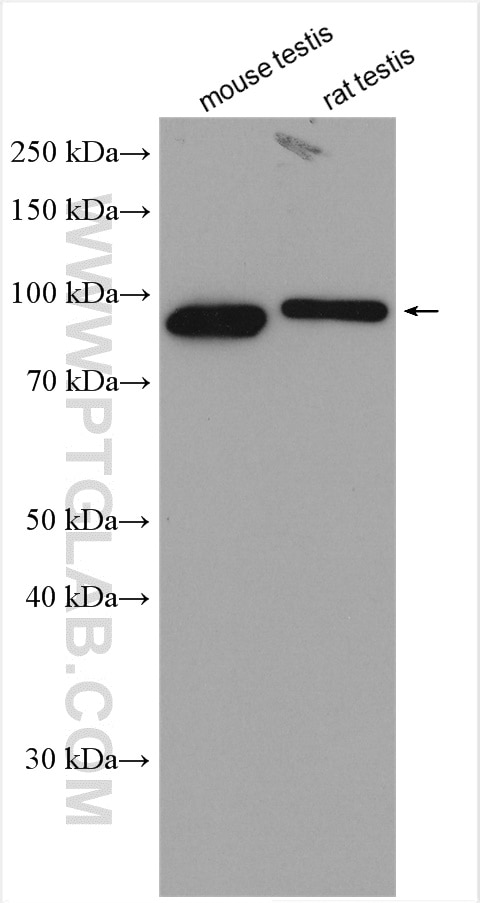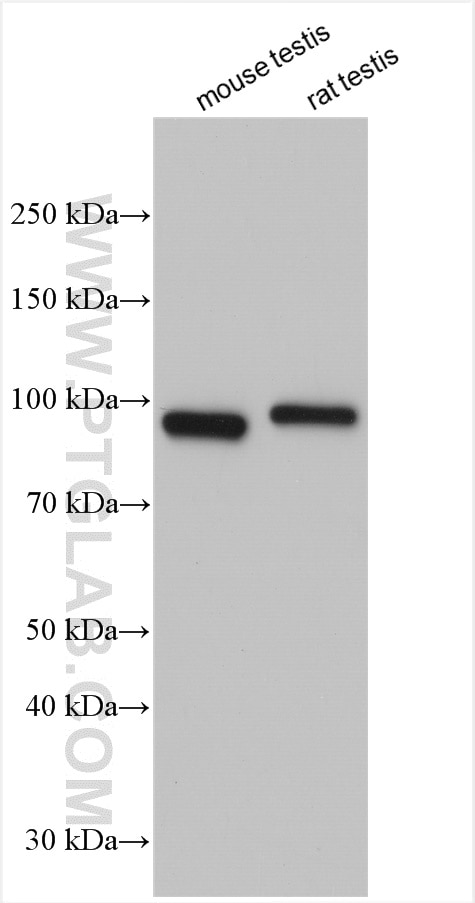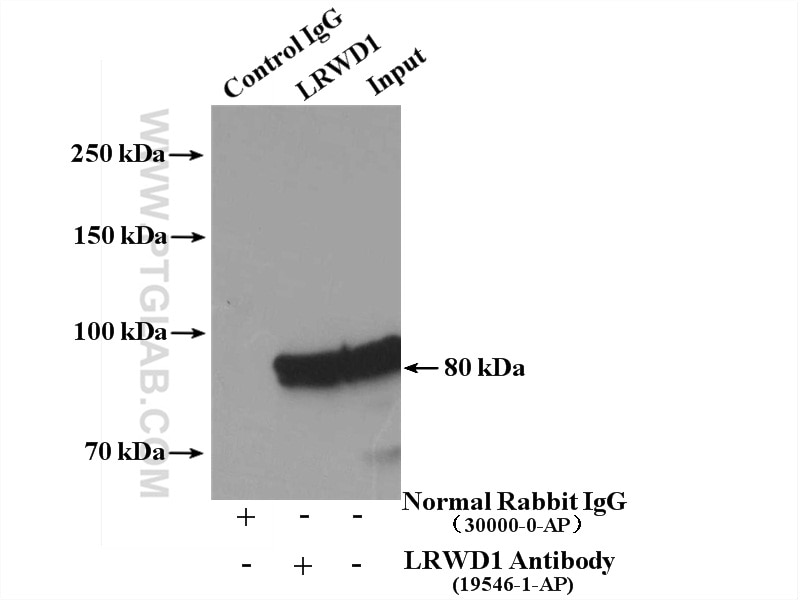Tested Applications
| Positive WB detected in | mouse testis tissue, rat testis tissue |
| Positive IP detected in | mouse testis tissue |
Recommended dilution
| Application | Dilution |
|---|---|
| Western Blot (WB) | WB : 1:5000-1:50000 |
| Immunoprecipitation (IP) | IP : 0.5-4.0 ug for 1.0-3.0 mg of total protein lysate |
| It is recommended that this reagent should be titrated in each testing system to obtain optimal results. | |
| Sample-dependent, Check data in validation data gallery. | |
Published Applications
| WB | See 1 publications below |
Product Information
19546-1-AP targets LRWD1 in WB, IP, ELISA applications and shows reactivity with human, mouse, rat samples.
| Tested Reactivity | human, mouse, rat |
| Cited Reactivity | human |
| Host / Isotype | Rabbit / IgG |
| Class | Polyclonal |
| Type | Antibody |
| Immunogen | Peptide Predict reactive species |
| Full Name | leucine-rich repeats and WD repeat domain containing 1 |
| Calculated Molecular Weight | 71 kDa |
| Observed Molecular Weight | 85 kDa |
| GenBank Accession Number | NM_152892 |
| Gene Symbol | LRWD1 |
| Gene ID (NCBI) | 222229 |
| RRID | AB_2878588 |
| Conjugate | Unconjugated |
| Form | Liquid |
| Purification Method | Antigen affinity purification |
| UNIPROT ID | Q9UFC0 |
| Storage Buffer | PBS with 0.02% sodium azide and 50% glycerol , pH 7.3 |
| Storage Conditions | Store at -20°C. Stable for one year after shipment. Aliquoting is unnecessary for -20oC storage. 20ul sizes contain 0.1% BSA. |
Background Information
LRWD1 contains 3 LRR (leucine-rich) repeats and 5 WD repeats. LRWD1 is phosphorylated upon DNA damage by ATM or ATR. The antibody recognize the N-term of LRWD1.
Protocols
| Product Specific Protocols | |
|---|---|
| WB protocol for LRWD1 antibody 19546-1-AP | Download protocol |
| IP protocol for LRWD1 antibody 19546-1-AP | Download protocol |
| Standard Protocols | |
|---|---|
| Click here to view our Standard Protocols |
Publications
| Species | Application | Title |
|---|---|---|
Development PRSS50 is a testis protease responsible for proper sperm tail formation and function. |







